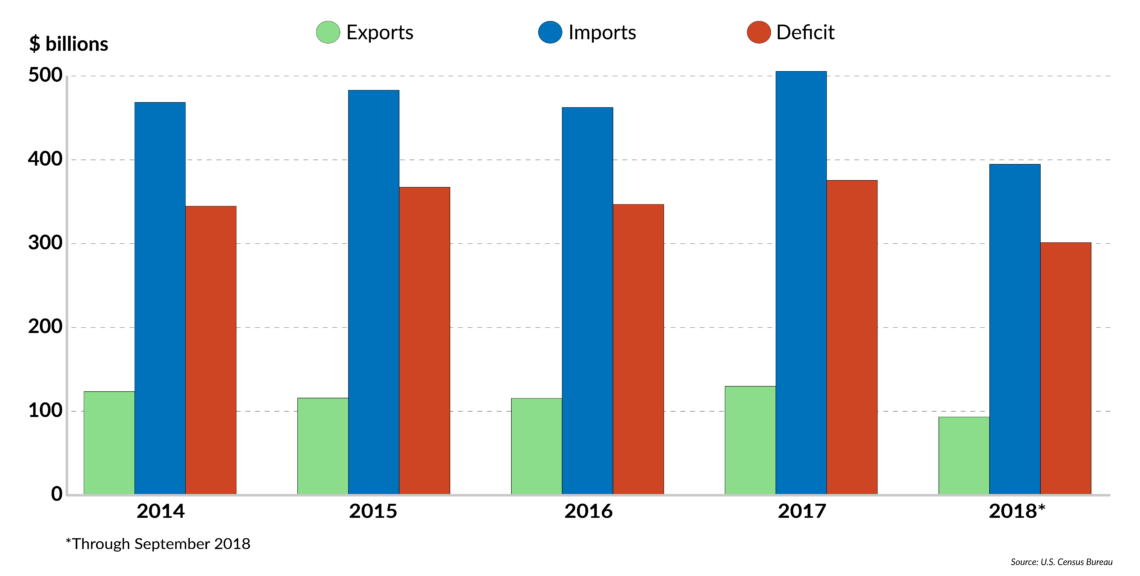Potential benefits of the U.S.-China trade dispute
Past U.S. administrations have shied away from standing up to China on trade. Donald Trump’s tough stance has put Beijing in a tough spot, and it is likely to bite the bullet on a deal. A face-to-face meeting between the country’s two leaders this month could initiate a process of the U.S. and China policy coordination.

maintains a huge trade deficit with China. © macpixxel for GIS
Trade disputes between the United States and China have a long history. For years, China has been accused of unfair practices, ranging from price dumping to economic espionage, stealing intellectual property and currency manipulation. There is plenty of evidence to substantiate these accusations.
Past U.S. administrations addressed these issues cautiously, using language that was mostly ignored by Beijing. The U.S. shied from conflict. China has a huge trade surplus – partially due to cheap supply – and Washington might have been anxious about the inflationary consequences of more expensive production at home or from other countries.
China is also a big supplier of U.S. manufacturing, especially in high-tech sectors. Measures against China might have rendered these products less competitive. Concerns might also have been raised about the adverse consequences an open trade conflict could have on the U.S. and global economy.
President Donald Trump’s administration has not been as shy as its predecessors. His “America First” policy required action.
The Chinese realize that Washington has the stronger cards.
After some rhetorical back-and-forth between Beijing and Washington, the U.S. began imposing tariffs. So far, the U.S. has slapped higher tariffs on some $250 billion of Chinese imports, whereas Beijing retaliated on $110 billion of U.S. goods sold to China. The difference between these amounts more or less reflects the import-export ratio between the two countries.
President Trump threatened that if the U.S. does not reach a satisfactory agreement with China, his administration will levy tariffs on another $267 billion of Chinese products.
In the meantime, China is trying to improve its relationships with other trading partners, especially in Europe. However, the Chinese appear to realize that Washington has the stronger cards at the moment, especially since its claims are based on valid grounds. Pragmatism is likely to drive Beijing to bite the bullet and compromise on a deal.
The face-to-face dinner between President Trump and Chinese President Xi Jinping at the G20 summit later this month in Buenos Aires might initiate this process. Even more important, it might be the beginning of a “G2” relationship which, though frequently under stress, could provide a forum for the world’s two biggest powers to coordinate their global agendas.
